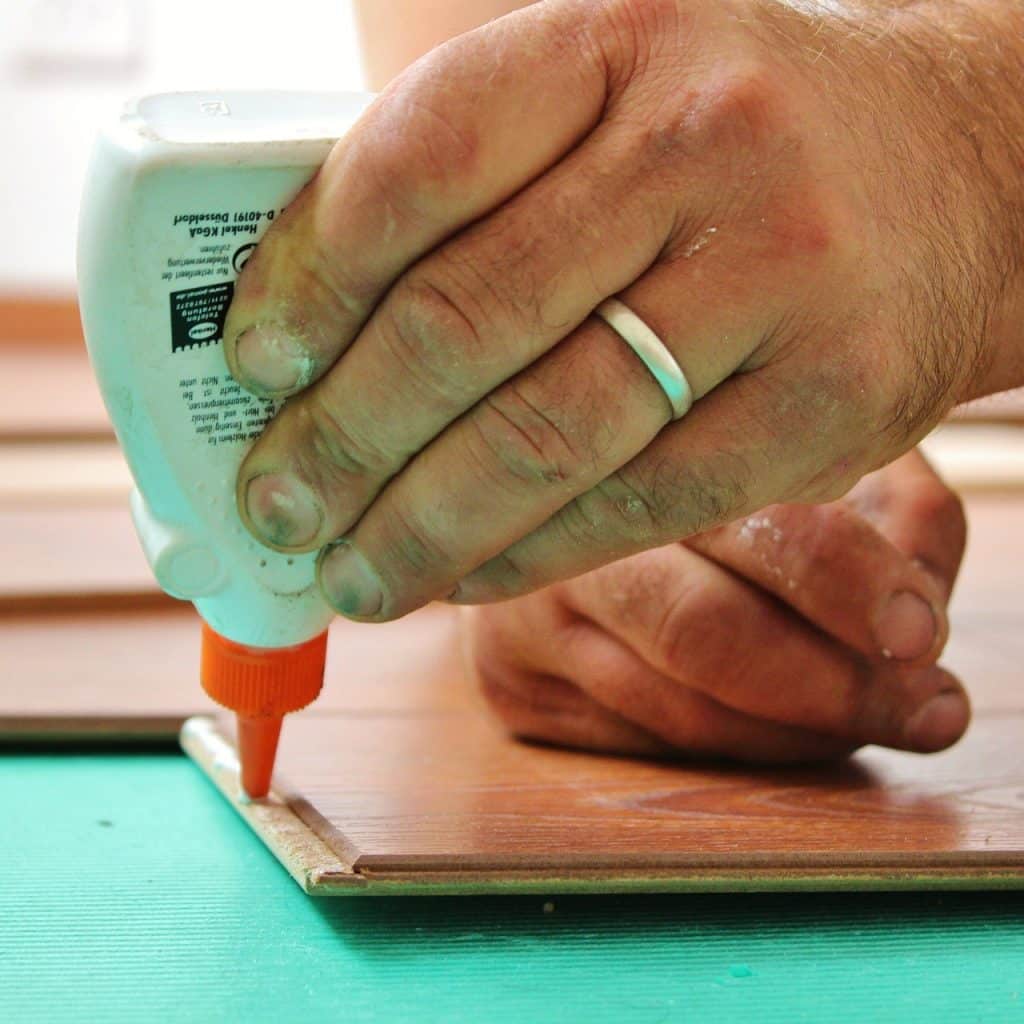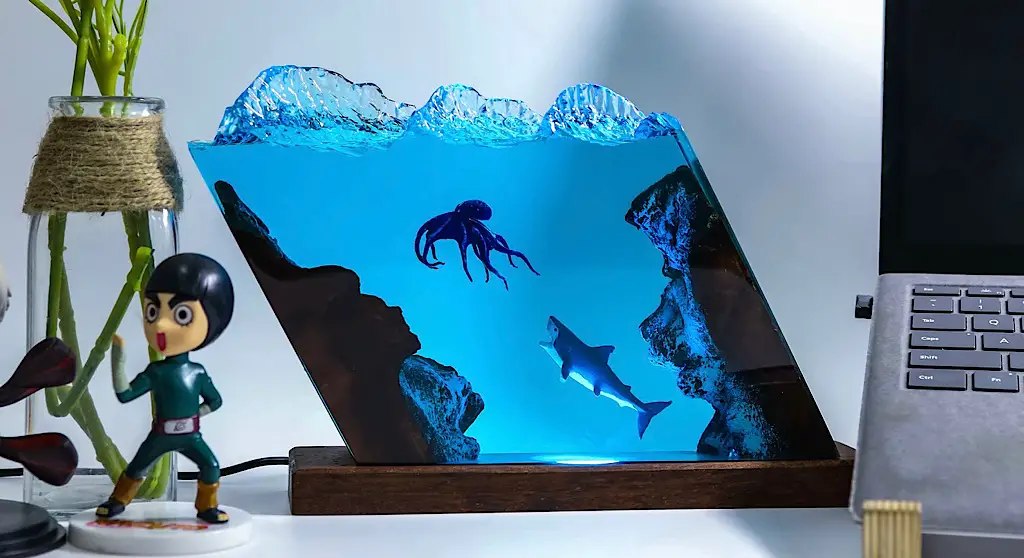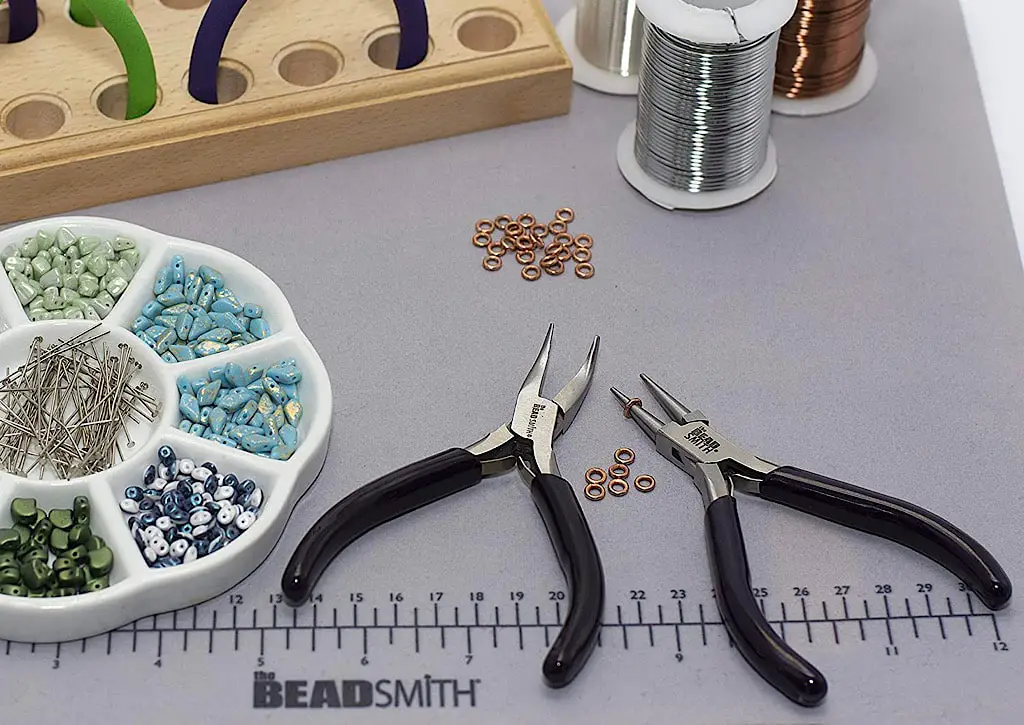When you purchase through links on our site, we may earn an affiliate commission. Learn more...
Hot Glue vs Super Glue: What Are The Differences?

Both hot glue and super glue are two of the most popular adhesives which are used for a variety of purposes, from crafting to household repairs.
Despite their similarities, there are several differences between the two types of glue that make them better suited for certain tasks.
In this article, we will take a closer look at the characteristics, advantages, and disadvantages of hot glue and super glue, and compare them to help you determine which one is best for your needs.
Key Takeaways
- Hot Glue
- Quick setting and strong bonding.
- Easily adjusted while still warm, but becomes difficult to remove once cooled.
- Good for fabrics and paper, but not heat resistant and performs poorly on glass and plastic.
- Comes in a variety of colors, but some turn yellowish over time.
- Affordable and safe, but not recommended for exterior use.
- Burn danger
- Super Glue
- Sets within seconds, is ideal for all types of surfaces, and forms a stronger bond than hot glue.
- Easier to apply, but harder to remove.
- Resistant to water and most chemicals.
- Perfect for non-porous materials like metal and glass.
- Irritates skin, has toxic fumes, and stains fabrics and paper.
- Not recommended for children to use.
- Highly flammable
What is the difference between Hot Glue and Super Glue?
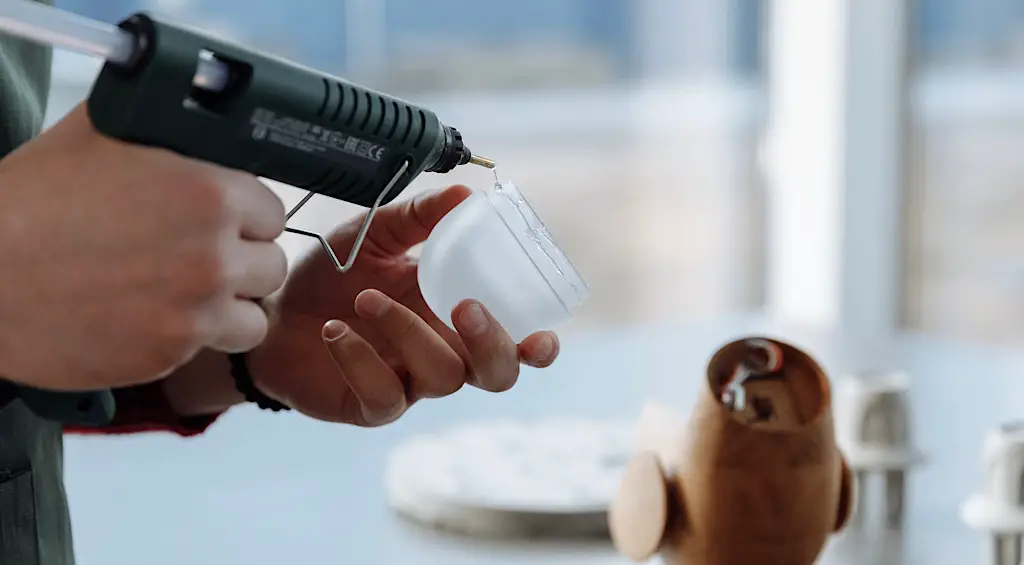
Hot glue is a thermoplastic adhesive that is melted with the help of a tool called Hot Glue Gun, and as the name states, it is applied hot. It is used for both porous and non-porous materials.
The glue is sold in sticks (sometimes longer or shorter) which you can use to refill the hot glue gun and use again and again.
Super glue is a fast-drying cyanoacrylate adhesive that is used for small, tight-fitting surfaces. It is usually sold in metallic or plastic applicators.
Hot Glue
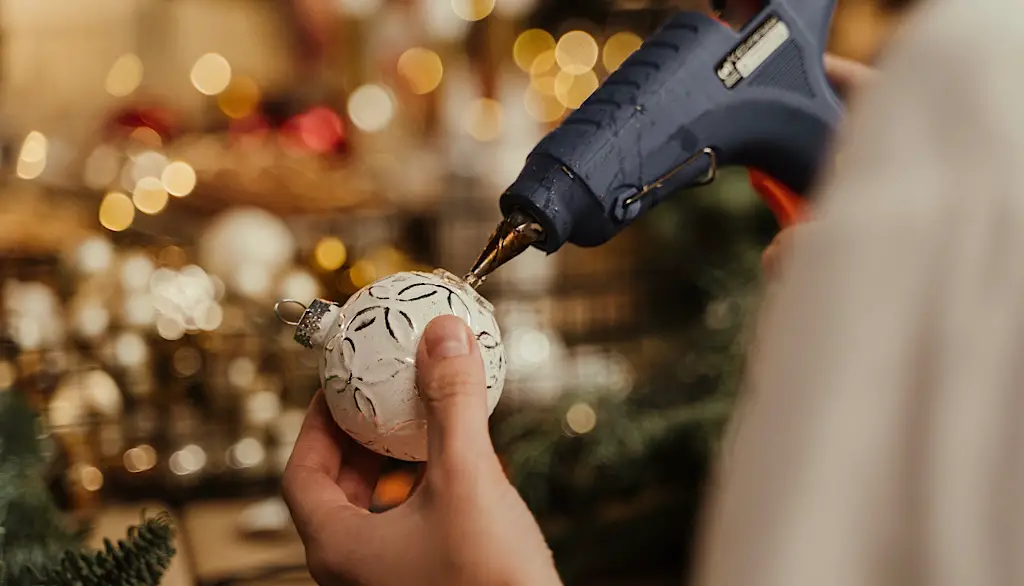
Characteristics
Hot glue sets quickly and forms a strong bond. It can be easily adjusted while it is still warm. Once it cools, it becomes difficult to remove. However, that depends on the material.
For example, removing it from fabric and paper is nearly impossible, but removing it from plastic and metal can sometimes be a piece of cake.
I recently used hot glue to adhere a relatively old RGB LED strip to a desk, and once I had to remove it, I just pulled the strip and it came right off. No struggle at all.
Hot glue sticks come in a wide variety of colors including white, clear, rainbow colors (red, green, etc), black, gold, silver, or even glitter ones for special uses.
Once it cools, depending on the color of the stick, it preserves the primary color. However, note that the white and clear sticks tend to turn a bit yellowish over time (like silicone).
Advantages
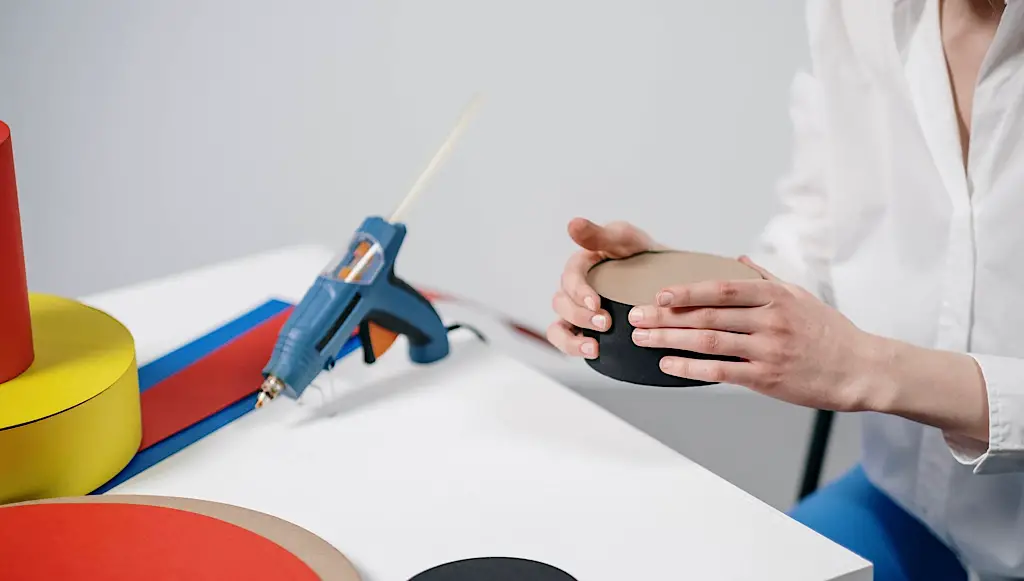
Hot glue is surprisingly good for fabrics. As I previously mentioned, it’s almost impossible to remove (even if you heat it) which makes it as durable as it goes.
It also doesn’t stain the fabric which makes it invisible, unlike super glue. And it is way cheaper and safer than the industrial E6000 adhesive and its relatives.
It also performs very well on paper and it also doesn’t stain it. It forms a strong bond with all kinds of paper, from printing paper to tissue or even cardboard.
Disadvantages
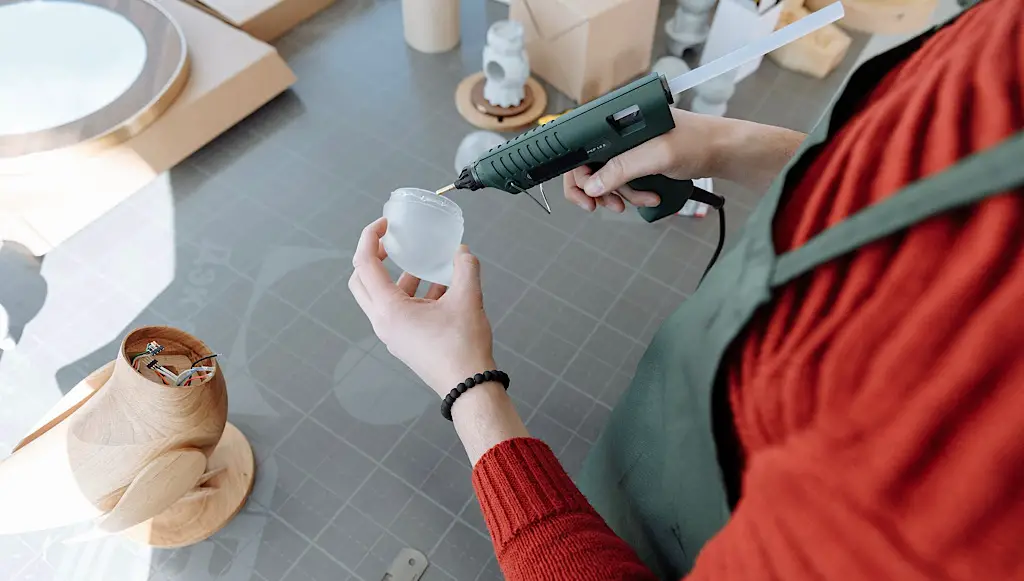
One of the drawbacks of hot glue is that it is not heat-resistant. Prolonged exposure to high temperatures can cause the bond to weaken, and in worst-case scenarios, to melt.
Let’s assume you use it in a structure in your garden, and the part where the glue is applied is exposed to the sun every day during hot summers.
Yes, jokes aside, the glue can actually melt. This is why it is not suggested for exterior use. You should use Wood Glue instead.
It also performs horribly on glass and it doesn’t hold for long.
Some time ago, I used hot glue to adhere beats of beach glass on a craft, and after a day or so, they started popping off when I touched them and I immediately regretted not using super glue instead. So keep that in mind.
Super Glue
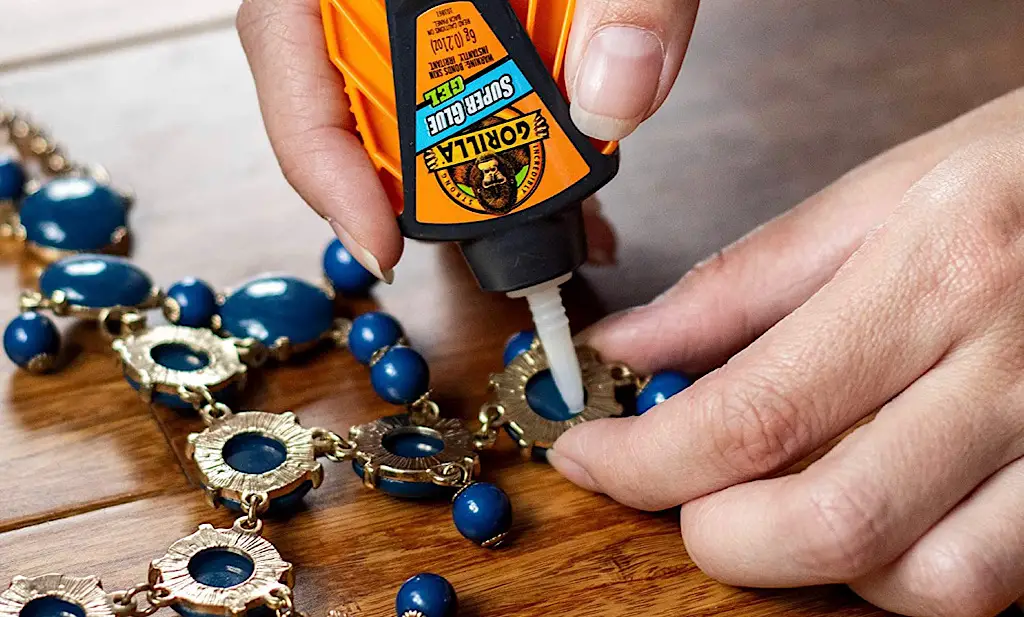
Characteristics
Super glue does not require heat to activate, unlike hot glue, and it sets within seconds. It is ideal for pretty much all types of surfaces, and it forms a stronger bond than hot glue.
Even though no tool is required, and it technically can’t give you a burn (unlike the hot glue gun), you should be cautious when using super glue as it can irritate the skin, and it’s very easy to get your fingers stuck together.
The fumes are toxic so avoid inhaling them as they can cause fainting, etc. Also, note that super glue is highly flammable so never use it or stash it near a flame.
Advantages
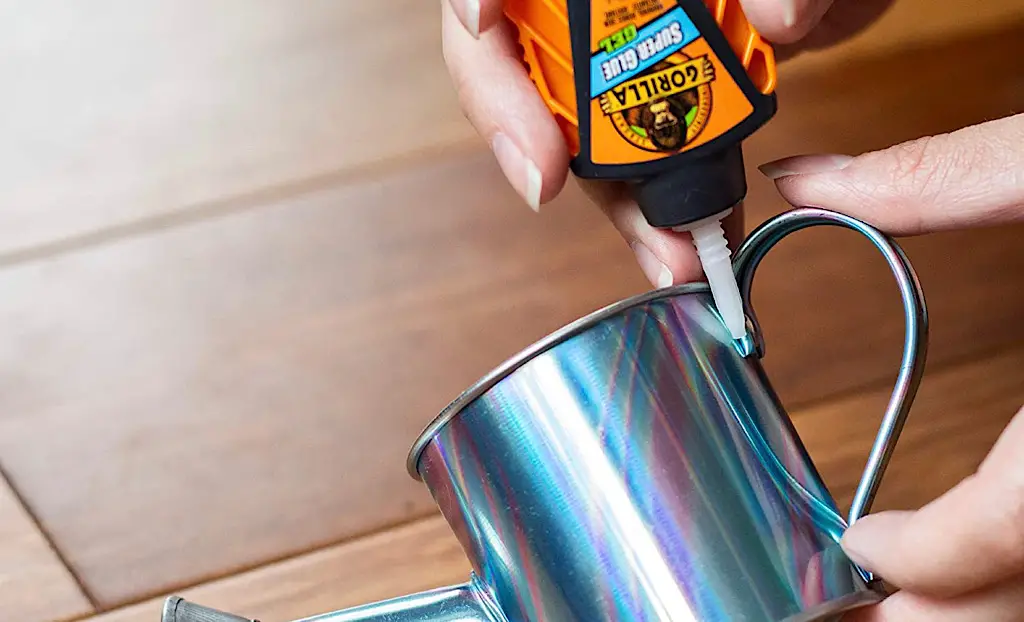
Unlike hot glue, super glue is far easier to apply, but it is also significantly harder to remove. It is resistant to water and most chemicals, but if you need it removed (from your skin as well), you should use acetone (nail polish remover).
It is perfect for non-porous materials such as metal and glass, and it should be your first option over hot glue for that type of use.
If you need to fix something, like your jewelry for instance, this type of glue is the best solution as it’s durable and lasts for a very long. If you are a jewelry maker, you may want to add it to your toolbox.
It is also perfect for adhering flat-back rhinestones on fabric and other materials as it holds for long and it’s washable.
Disadvantages
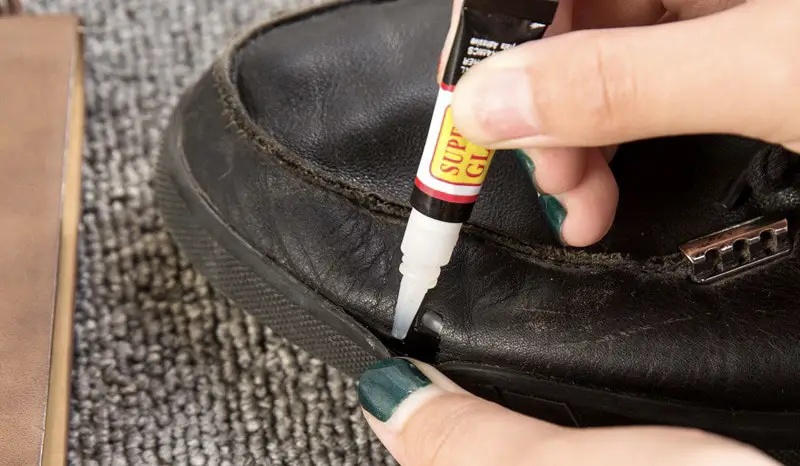
Super glue stains fabrics. Once it sets, it either appears darker on the spot (like the fabric is wet on the area) or it whitens.
Some super glues do not let a white stain, however, like the Logo Gel which I recently tested (and I was pleasantly surprised).
As I mentioned above, it’s good for sticking rhinestones to fabrics but make sure you use a small amount so it won’t stain it (preferably apply it on the rhinestone directly).
It also stains the paper. It is good for cardboard but not for other paper crafts that require the use of glue.
For these types of crafts, you should select a Crafts Glue which doesn’t have that effect and is also proper for children.
Can children use Hot Glue or Super Glue?
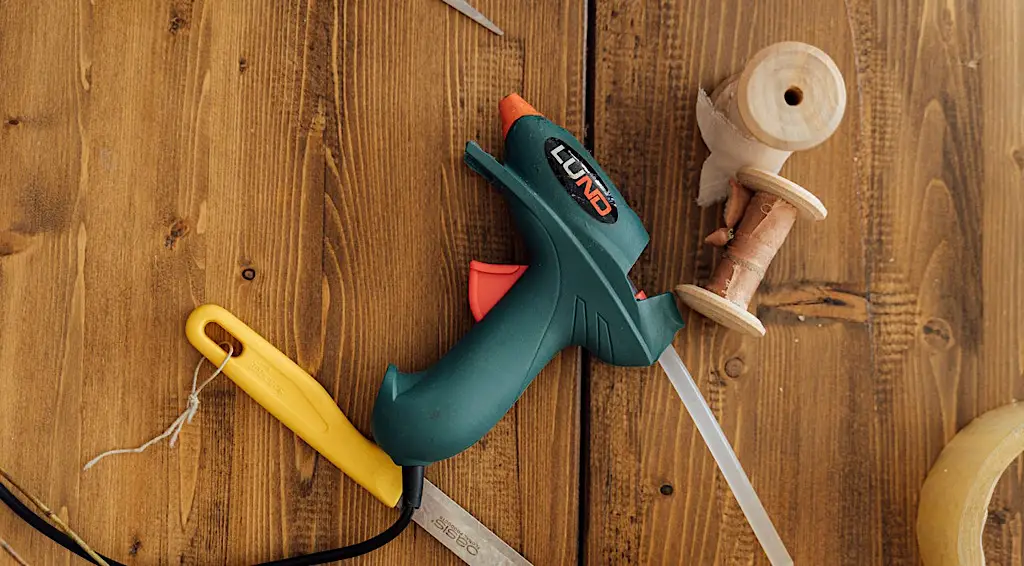
Generally speaking, neither hot glue nor super glue is ideal for children’s use. One requires a hot tool and the other is toxic. However, hot glue is more likely to be used by kids (over the age of 8) but with supervision.
The glue is hot as well but I’ve got it accidentally on my skin countless times while using it and no harm was done. But be wary of the hot glue gun.
A contact of barely a second may not cause any burns but prolonged exposure can.
The super glue on the other hand is a “No” from me. At least not for children under the age of 12 who can be more cautious about the fumes and overall use of this glue.
How do I use Hot Glue?
To use hot glue, you need:
- Hot glue sticks
- Hot glue gun
- A flat, easy-to-clean surface where you will place the hot glue gun while you don’t use it.
Step 1
- There’s a round hole on the back of hot glue guns. That’s where the glue sticks go in. Place them in the glue gun until they are inserted in the second hole.
- Plug the glue gun into a power socket near you. It must be plugged in for as long as you use it. Wait for 3 to 5 minutes until the glue gun heats well.
- When you don’t use it, you should keep it on baking paper. The melted glue will drip from the nose tip on the front side of the gun right onto whatever surface you’ve placed it on.
- Keep the glue gun with the nose tilted down with the help of the metallic foot that comes with it (not all glue guns have one though).
Step 2
- Apply the necessary amount of glue you want on your material by pulling the trigger of the glue gun.
- After the glue drips, it will form the famously irritating “spider webs” which are thin strands of glue.
- You can avoid as much of that as possible by quickly moving the gun tip in a circle around the spot you applied the glue before pulling it away.
Step 3
- At this point, the glue is still hot so do not touch it with your fingers. It cools and sets after a minute or so.
- You can speed up the process by gently blowing with your mouth.
- When you no longer need to use the hot glue, unplug it from the power socket and let it cool down before you store it again.
How do I use Super Glue?
Using super glue doesn’t really need a step-by-step guide. All you have to do is apply it, apply some pressure on the object you want to adhere with it for a couple of seconds, wait for it to dry, and you are all done!
How to store Super Glue.
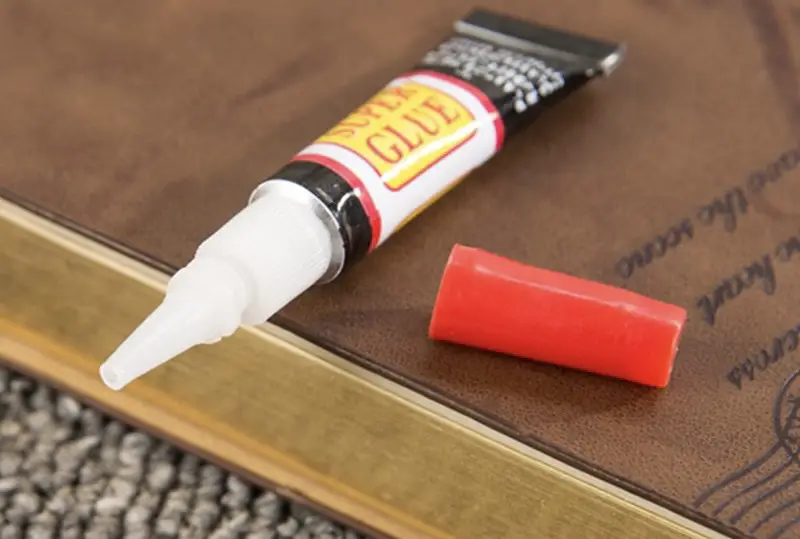
After you are done using it, always wipe the tip with a paper tissue and store it upright. If you don’t, it is very likely it will dry near the tip and block it. If that happens, use a needle to clear the tip so that you can use it again.
Conclusion
In conclusion, hot glue and super glue are both popular adhesives that have different characteristics and advantages. Hot glue is quick-setting and forms a strong bond but it is not heat-resistant and performs poorly on glass.
On the other hand, super glue is easy to apply, durable, and resistant to water and most chemicals, but it stains fabrics and can irritate the skin.
It is important to choose the right type of glue for a specific task based on the materials being used and the conditions the glue will be exposed to. If you have further questions (including different brands of glues), feel free to ask below.


